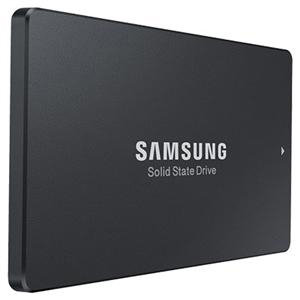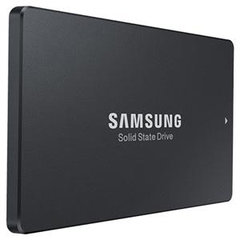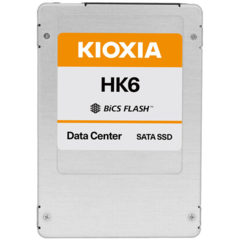Samsung SSD 480GB 2.5 SATA PM883, TLC - MZ7LH480HAHQ-00005
Capacity: 480 GB BUS: SATA Format: 2,5" Speed: 550 MBps (read) / 520 MBps (write) Random Read (4K): 98000 IOPS Random Entry (4K): 25000 IOPS Lifetime: 1.3 DWPD Technology: TLC
Interested in purchasing more units? Request an individual B2B offer for these products.
| Product code | 227.164386 |
|---|---|
| Part number | MZ7LH480HAHQ-00005 |
| EAN | 4260580370924 |
| Supermicro Part No. | HDS-S2T1-MZ7LH480HAHQ05 |
| Manufacturer | Samsung |
| Availability |
In stock 3 pc
Stock allocation and delivery options
Rožnov In stock
Transport company across Europe Thursday 23. 1. at the latest Friday 24. 1. |
| Supplier availability | In stock 100 pc |
| Warranty | 60 months |
| Weight | 0.06 kg |
| The price includes all legal fees | |
Detailed information
SSD
SSDs using SATA, SAS or NVMe interfaces are ideal for applications where the balance between read/write speed and affordability is important. They can be used, for example, as system disks, in database servers or IOPS-heavy hot-storage. In addition to its unrivalled speed, it offers, at a higher price, very low failure rates and higher reliability and resistance to vibration and temperature fluctuations. These drives are generally available in 2.5" format and they are therefore compatible with hot-swap slots designed for HDDs.
Samsung
SATA
Serial ATA is the name for the computer bus used to connect high-capacity devices - HDDs and SSDs. Today, SATA revision 3.0 (SATA 6 Gb/s) is used, which offers data throughput of up to 600 MB/s. SATA uses the older AHCI interface for communication, which is, however, sufficient and the most widespread.
Speed
For SSDs, speed is most commonly divided into sequential speed, which is given in MB/s, and random speed, which is given in IOPS. SSDs are many times faster than traditional hard drives and are rapidly approaching in price in recent years. They also have a much lower access time and they do not wear out the disk during the reading process as is the case with traditional rotating disks.
550/520 MBps
98000/25000 IOPS
Capacity
The capacity of a disk often determines its usage. High-capacity HDDs are used for storing and backing up large amounts of data. High-capacity SSDs are useful, for example, when multiple users are simultaneously working with large amounts of data in real time. On the other hand, SSDs with a small storage space are mainly used for the operating system and its fast running, or as a boot drive or hypervisor.
Lifespan
To determine the lifespan of the drive, TBW(TeraBytes Written) and PBW(PetaBytes Written) parameters are often given to indicate the total data written to the SSD before failure. The second most common designation is DWPD (Drive Writes per Day) indicating how many times per day the user can overwrite the entire capacity of the SSD for the duration of the warranty.
1.3
2.5“
This format is most often found in SSDs, but also in desktop, most often laptop hard drives and also specialized fast SAS drives. It stands out with its lower consumption and better heat dissipation compared to 3.5" disks. The most common use is found in 1U and 2U servers, all-flash disk arrays.
Parameters
| Interface | SATA |
|---|---|
| HDD type | 2,5" |
| Capacity in GB | 480 |
| Read speed | 550 |
| Write speed | 520 |
| Random read | 98000 |
| Random write | 25000 |
| DWPD | 1.3 |












